JOTS v40n1 - Characteristics of Today's Applied Engineering College-Level Educator
Jeffrey M. Ulmer, Douglas Koch, and Troy Ollison
ABSTRACT
Higher education is constantly changing and evolving. Many contend that the recent changes have not always been positive and that current changes have greatly affected applied engineering programs. The purpose of this article is to investigate and collect information regarding current issues and the current state of educators in postsecondary, applied engineering/technology programs. It is a broad overarching approach with the intent of identifying the current state, potential research needs, and concerns within the discipline. Two hundred and twelve faculty members within the United States responded to a national survey to help fellow faculty determine the current and evolving characteristics of today's applied engineering college–level educator. Previous literature and data identifies changes related to financial challenges, salaries, technological advancement, professional experience, course load and class size, globalization, and lack of advancement opportunities. The survey sought to determine the current status of the field in those areas and found that the mean salary of $73,567 for the respondents was above the mean national higher education salaries but had a high standard deviation. Of the faculty, 74% are teaching in the classroom followed by 13% hybrid, and 13% online. The mean number of years of service outside of academia was 12.34. Regarding positional status and opportunities for advancement, the respondents were 21% contract only, 19% tenure track, and 60% tenured faculty. The data collected points out some areas that have potentially changed over time and areas that need further investigation. Long–term data is needed to establish a change in trends.
Keywords: Higher Education, Professional Development, Technology, Applied Engineering
INTRODUCTION
Most industries and businesses are in a constant state of change. As economies change, technologies evolve, and labor forces fluctuate, industries have to adapt and change as well. Higher education is no different. Some might argue that education, particularly postsecondary education, is somewhat slow and reluctant to change but it does change nonetheless.
This purpose of this article is to investigate and collect information regarding current issues and the current state of educators in postsecondary applied engineering/technology programs. It is a broad overarching approach with the intent of identifying the current state, potential research needs, and concerns within the discipline.
Review of previous literature and studies reveal that there are several aspects of applied engineering programs that are changing and are of concern to many of the current educators. A couple of the changes or concerns often pointed out include a potential shortage of well–prepared faculty and concerns of salary compression or low salaries. According to the Bureau of Labor Statistics (2010) , postsecondary teacher growth is projected at 17% from 2010 to 2020, and in 2010 the faculty earned a median salary of $62,050 per year. Additional concerns include the ever– changing population of students and their skills and abilities they bring with them out of high school. Applied engineering college–level educators are being called upon to deliver remedial, introductory, intermediate, and advanced technical content to students in traditional classroom, hybrid/blended, and 100% online delivery methodologies. Many faculty members are not only teaching typical lecture courses but also being tasked with running student laboratories, advising students, participating in professional associations, serving on governance committees, having responsibility for finance, and keeping technical education for themselves, and their students, at a high level of competency ( Chikasanda, Otrel–Cass, & Jones, 2010 ). The culmination of these factors may result in possible reasons for some educators to leave teaching. Steinke and Putnam (2011) pointed out that applied engineering educators leave the teaching profession due to "low salaries, lack of career advancement, or administrative support, student and peer issues, and other school and environment–related concerns" (p. 41). This paper is a culmination of efforts after a broad literature review–based survey was administered online to educators in the United States with the purpose of obtaining the current and evolving characteristics of today's applied engineering college–level educator.
CURRENT CHALLENGES FACING EDUCATORS
There are many challenges facing university faculty given the current systems and methodologies employed by higher education institutions. Some contend that certain changes within higher education are detrimental. Wheeler (2004) provided seven fundamental reasons for the decline of the traditional university system and the faculty in the system. They include "technological innovation, adverse economic climate, mounting commercial competition, demands for greater flexibility, subject proliferation, erosion of academic staff base and globalization" (p. 12). Wheeler also stated that the survival of universities is dependent upon retaining talented and innovative staff through job security, job satisfaction, and optimal rewards without using the typical disdain often given to faculty who support the academic system.
University faculty members are very resilient and have been forced to adapt to changes. Today's educators possess passion for their jobs and often focus on where they can make a difference ( McClellan, 2012 ). In the midst of change, educators typically go with the flow and adapt to their educational reality ( Osborn, 2012 ). With changing technologies and evolving delivery methods, faculty members have received the "do more for less" mentality from many higher education institutions. Privateer (1999) pointed out these concerns several years ago stating, "factoring in the growing tendency of federal officials, governors, legislators, governing boards, and college and university administrators to envision instructional technologies as a panacea able to maintain the status quo while dramatically cutting delivery costs" (p. 66).
Financial Challenges
According to Kelderman (2012) , state appropriations for colleges declined 7.6% from 2011–2012. Program and departmental budgets are being stretched further as costs of operations are ever increasing. Numerous academic institutions are facing financial challenges and focusing on increasing enrollments to offset budget and appropriation deficits. Donoghue (2011) related that many colleges and universities are increasing the number of students in each class and the number of classes taught each semester by each educator. This translates into more generated revenues. Many administrators in higher education feel that the current state of academia can be remedied through higher levels of recruitment and retention of faculty ( Field, 2011 ). Miller (2011) supported this idea by stating that marketing is a key to program success and survival. Currently, higher education faculty recruit and retain students through face–to–face meetings, web–based technologies, and social networks ( Doggett & Lightner, 2010 ). Sevier (1996) stated years ago that higher education administrators begin with vision, define marketing broadly, create an institutional image, and understand student decision–making to set the stage for a increasing student enrollment and keeping retention higher.
Salaries
Salaries are often mentioned regarding concerns for retaining and attracting qualified faculty. Whereas postsecondary teachers earned a 2010 median salary of $62,050 per year with no requirement of related occupational experience, faculty in the more specialized area of career and technical education (technology and applied engineering teachers) earned a median salary of $53,920 per year with 1 to 5 years of related occupational experience ( Bureau of Labor Statistics, 2012 ; Occupational Outlook Handbook, 2012 ). This disparity in salaries is a reality, and no literature could be found to explain the differences. The lower salary is exasperated by the fact that non–faculty feel that college educators do not earn the salary they currently are paid because faculty typically work less than one–half the time of those outside of academia ( June, 2012 ). Furthermore, many institutions are on a faculty–hiring freeze, and faculty pay dropped 1.8% during a 2011–2012 academic year undergoing a 3% inflation rate as reported by the American Association of University Professors ( June, 2012 ; Osborn, 2012 ).
Technological Advancement Technologies have evolved to help educators maintain levels of competency and give students the tools they need for their studies. As these technologies have evolved, educators still face challenges in providing students with basic skill competencies all while increasing the number of postsecondary students in their programs, aligning curriculum with employers' skill needs, creating better education delivery modalities, and still attempting to provide students with an educational experience that adds to a student's skill sets ( Jones, 2013 ).
One of Wheeler's (2004) reasons for the decline of the traditional university system was ironically technological innovation. One would think that technological innovation would be an asset that higher education relies on and benefits from; to some degree that is the case. Lack of technological innovation and competency can be a detriment. Grumwald (2010) summarized that effective teachers use technology to enhance student learning. The understanding of technology is a must for technologists and applied engineering college–level educators ( Devine, 2006 ). Educators need to be ready to handle diversity, incorporate technology for faculty and student breadth–of–knowledge, use multimedia formats to aid critical thinking, and teach students entrepreneurial skills ( Donlevy, 2005 ; Kenney, McGee, & Bhatnagar, 2012 ).
In the new reality of online education, an educator is someone who "reaches across time and distance through online courses and virtual universities" ( Wolcott, 1997 , p. 3). Key student program awareness tools and education technologies available for education institutions include: "virtual campus tours, online enrollment and admission, specialist keynote lectures via webcasting, individualized course delivery and live links to special events" ( Wheeler, 2004 , p. 11). Gumbo, Makgato, and Muller (2012) took the competency of educators seriously by suggesting that educators should be profiled to ascertain if their level of technology understanding is satisfactory, and if not, apply appropriate remedial training to prepare them for educating today's students.
Technical innovation also encompasses specific technologies within the field(s). According to a Society of Manufacturing Engineers (SME) survey with 261 respondents, conducted by Callahan, Jones, and Smith (2008) , students should be prepared in areas of "lean process improvement tools, CAD/CAM, flexible manufacturing, integrated manufacturing systems, six sigma and automation" (p. 5). Therefore applied engineering educators should possess these same skills. Other areas of preparation for students, and educators, include: "sensor technology, advanced inspection techniques, automated material handling, expert systems, artificial intelligence, simulation, laser applications, design of experiments (DOE) and composite materials" ( Callahan, Jones & Smith, 2008 , p. 6).
Professional Experience
Garrison (2005) contended that an increasing number of universities strive to higher faculty members with industry or government experience. A quick search of job postings for applied engineering related positions will show many requiring or preferring recent industry experience. Applied engineering college–level educators often enter teaching straight out of the industrial trenches. Garrison found that the predominant reason for individuals to switch from industry to academia was "the desire to teach." These late–entries of "new" faculty, who have professional experience, often benefit the students due to their experience in applied engineering and technology. In 2010, Nickolich, Feldhaus, Cotton, Barrett, and Smallwood commented that midcareer professionals bring other attributes and stated:
In addition to their presumed subject matter backgrounds in high–demand disciplines, midcareer professionals who are currently a part of, or choose to enter teaching, can bring new maturity and experience to the nation's talent base of educators and help connect teaching and learning to expanded applications in the world of work (p. 44).
One of the challenges of requiring work experience prior for faculty positions is that it reduces an already small pool of candidates. In some professions, advanced degrees are not often sought and may not always benefit someone in an industrial setting. An individual may have excellent work experience but may lack the required education or terminal degree required for many jobs in higher education.
Course Loads and Class Sizes
Donoghue (2011) stated that many universities are trying to offset financial deficits by increasing sections of course offerings and increasing the numbers of students enrolled in those sections. Faculty at one time were given release time to pursue scholarship, continuing education, and to offset large class sizes. Now they are often being required to increase their activities on committees, recruitment, and participation with accreditation activities or other duties. Wilson (2011) mentioned several examples in which release time and reduced teaching loads have been removed from faculty. She believes that release time and "deals" for teaching relief are not as common. She stated that, "the pendulum on granting special deals in exchange for service is swinging back, specifically at public research universities." Many universities are going to standard teaching loads and with the increased enrollments at many schools; class sizes are increasing as well.
According to Barwick (2007) , when faculty members discuss workload, class size "arises repeatedly." Increasing the number of sections offered and the class size have many ramifications for faculty, departments, budgets, and the students. Faculty do not typically contend that student learning increases as class size increases. Many faculty are now teaching additional courses or sections to accommodate the increased need. As the number of students increases in classes, so do the costs associated with the classes. A typical lecture–based course will typically entail only an increase in workload for the faculty teaching the course, but many of the applied engineering and technology–based courses have lab and hands–on components. This creates increased needs for equipment and materials or could potentially pose a safety concern if numbers are too large.
Globalization
Wheeler (2004) also mentioned globalization as a cause for decline. Globalization is affecting how students should be educated ( Ayokanmbi, 2011 ). Therefore technology educators should align course content with the needs of industry ( Hogan, 2009 ; Jones, Smith, & Callahan, 2010 ). Demographic changes, technology advances, and globalization are claimed to be the game changers in the 21st century ( Donlevy, 2005 ; Karoly & Panis, 2004 ). In fact, many educators are being encouraged to insist that their applied engineering students acquire global perspectives through exposure to cultures in other countries and to be prepared for mobile careers ( Ayokanmbi, 2011 ).
Lack of Advancement Opportunities
Lack of opportunities for advancement or clearly outlined paths for advancement also seem to be a concern for faculty. Today's educator may or may not be tenured or in a tenure–track position. This all varies greatly with the type of institution and the mission of the institution. Although tenure–track faculty are usually assigned mentors to nurture scholarship and offer academic–pertinent advice toward tenure consideration, tenured faculty still require additional professionally applied training and education ( Chronicle, 2012 ). According to "Midcareer Mentoring, Part 1," published in The Chronicle of Higher Education in 2012, professors have questions and concerns about post tenure. The top questions asked include:
- How would I pursue employment at other institutions?
- Can a counteroffer at my institution help improve my career?
- How much service is required at my institution?
- Should I choose a position in administration?
These top questions may hint at tenured faculty members' concerns and desires to seek additional employment, address low salaries, and continue professional growth.
Obtaining tenure and progression through the ranks (instructor–to–assistant professor, assistant professor–to–associate professor, and associate–to–full professor) requires a well–documented dossier and supporting materials in the area of teaching, scholarship, and service in many higher education institutions ( Kelly, 2008 ).
According to the American Association of University Professors (1993) , "we believe that all faculty members—regardless of institution and regardless of workload—should involve themselves as fully as possible in creative and self–renewing scholarly activities" (p. 198). Service in academia possesses a broad base of definitions ranging from service on committees to public service for organizations outside an educational institution ( University of Wisconsin – Stout, 2010 ).
PURPOSE OF THE STUDY
The purpose of this study was three–fold for applied engineering college–level educators: 1.) conduct a broad literature review on employment conditions affecting faculty, 2.) administer a career–status–update survey to faculty in the United States, and 3.) report summarized survey results on the current and evolving characteristics in order to identify future, more in–depth research needs.
METHODOLOGY
A 23–question online survey was developed for distribution to faculty through the Association of Technology, Management, and Applied Engineering (ATMAE) and Texas A&M Engineering Technology (tamu.edu) Listservs at United States community colleges and universities that include Engineering Technology, Industrial Technology, or Technology programs. Information was obtained from faculty through an introductory listserv email and enclosed web link to the survey. The survey was posted in March of 2013. See Appendix A for the content of the online survey. Survey responses were kept confidential for this study.
Summarized survey data using Microsoft Excel and Minitab 16 were used to categorize:
- State of employment
- Positional status
- Faculty rank
- Length of time in current rank
- Length of time in a nonacademic position (before or after academia)
- Primary academic program for employment
- Number of students taught
- Academic salary
- Nonacademic salary
- Accreditation agencies supporting the program
- Degree levels obtainable for students
- Institutional offering of market pay
- Level of academic freedom
- Benefits cost of coverage
- Effective use of faculty talents
- Manageability of teaching requirements credit hours taught per semester
- Percent of share for class type (face–toface, hybrid, online)
- Ease in getting resources for teaching and labs
- Level of expectations for research (scholarship)
- Unique ways in which the institution supports faculty beyond base contract salary
- Expectations for promotion and tenure and general comments related to the college/university
- Satisfaction level at your institution
Study limitations could exist due to information provided by survey respondents. For instance, faculty may not possess a comprehensive understanding of the actual reasons for the way in which their institution is managing academic affairs. Furthermore, low salaries or benefits could be to the result of poor faculty performance or discord present between the faculty member and the immediate chair or supervisor. Another potential limitation was the use of a researcher–developed instrument with limited validity and reliability.
SURVEY RESULTS
State Representation for Study
Two hundred and forty four people from 39 states (see Figure 1) provided survey data, although this number was reduced to 212 survey respondents after removing individuals who did not provide one of the following responses: 1.) The primary applied engineering–related program, 2.) State worked in, 3.) Faculty rank, 4.) Positional status, or 5.) Average academic salary. This action was taken because these five questions were the baseline for extraction of information for summarization for faculty.
Positional Status
Primary positional status for survey faculty consisted of contract only (21%), tenure track (19%), and tenured (60%).
Faculty Rank
The dispersion of faculty rank was: Coordinator (1%), Director (1%), Adjunct (2%), Lecturer (2%), Instructor (13%), Assistant Professor (16%), Associate Professor (36%) and Full Professor (29%).
Length of Time in Current Rank
The mean years of service for the respondents were 10 years. The range was from 1 year to 40 years, with a surprising number of respondents with less than 10 years of service (see Figure 2).

Figure 1. Survey participation by region, subregion, and state
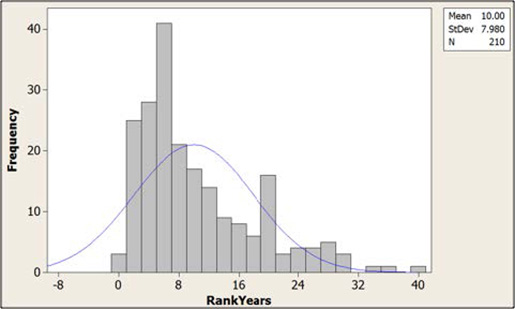
Figure 2. Faculty length of time in current rank
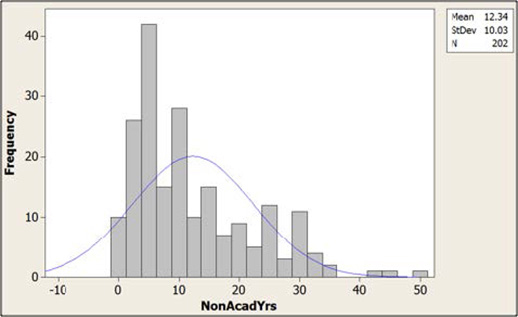
Figure 3. Faculty length of time in nonacademic position
Length of Time in a Nonacademic Position
The respondents had varying lengths of service in nonacademic positions with a range of 0–50 years and a mean of 12.34 years (see Figure 3).
Primary Programs and Degree Levels
Faculty teach in the following programs (with greater than 5 responses for each item): Construction Technology or Management (12), Design & Drafting Technology (or CADD) (12), Electronics Technology (33), Engineering Technology (76), Industrial Technology (15), Manufacturing Technology (13), Technology (7) and Technology Management (12). Degree levels taught as reported by greater than 10 survey respondents consisted of the following: Undergraduate (Associate—2 Year) (69 respondents), Undergraduate (Bachelor—4 Year) (94) and Graduate (Masters) (35).
Faculty Credit Load by Semester and Students per Semester
The number of credit hour load and students taught by a faculty member in a semester is provided in Figure 4. The mean credit hours taught per semester is 12.27 with an average of 63.86 students taught per semester.
Faculty Salary and Contract Length
Faculty salary mean was $73,567 with a standard deviation of $24,890 (see Figure 5). The vast majority of the faculty members are on a 9–month contract.
Administration Position and Pay
Survey respondents (number provided after title) who were both a faculty member and an administrator had the following primary positional titles: Chair (18), Coordinator (32), Department Head (3), Director (2), and Program Director (4). Seventy–one individuals responded to this question and provided the following stipend yearly amounts (values were only listed for greater than 3 responses): $0 (26 respondents), $3,000 (9) and $6,000 (4). Stipend range: $0 to $75,000 per year. Other means of support consisted of release time, teaching of summer courses, grant work, and online course development.
Market Pay
Yearly competitive (market pay) is not acknowledged or utilized at 50% of faculty institutions (83 respondents). The remaining 50% of respondents reported the following professional organizations for benchmarking: AAUP, ABET, ACCE, ASEE, ATMAE and CUPA–HR.
Accreditation Body
The primary accreditation body supporting a faculty member's primary program were (number of responses in parentheses): Accrediting Board for Engineering & Technology (ABET–EAC) (9); Accrediting Board for Engineering & Technology (ABET–TAC) (94); American Council for Construction Education (ACCE); and the Association of Technology, Management, and Applied Engineering (ATMAE) (45).
Academic Freedom, Benefits Cost of Coverage, Talent Usage, and Teaching Manageability
Academic freedom scored a mean of 3.79 on a scale of 1 to 5, with 5 being the highest. Benefits cost of coverage scored a mean of 3.57. Similarly, faculty talent usage scored a mean of 3.52. Teaching assignment manageability scored 6.16 on a scale of 1 to 10, with 10 being the highest.
Teaching Method
Faculty taught by face–to–face (74%), hybrid (13%), and online (13%).
Resources and Support, and Research (Scholarship) Expectations
Resources and support provided for faculty rated 6.33 on a scale of 1 to 10, with 10 being the highest. Research (scholarship) expectations by educational institutions scored 2.87 on a scale of 1 to 5, with 5 being the highest, by faculty.
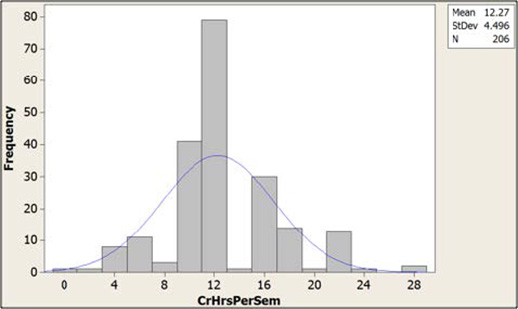
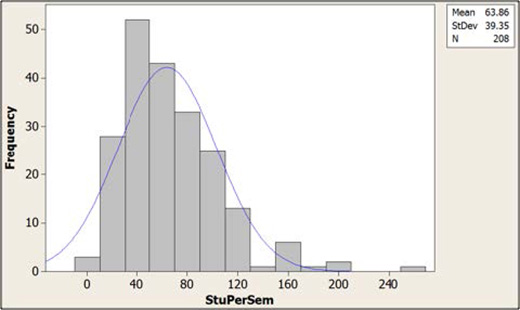
Figure 4. Number of students taught per semester by faculty
Promotion and Tenure Expectations
The survey allowed for open–ended responses regarding the respondent's university tenure and promotion procedures or expectations. A summary of faculty anecdotal information on their promotion and tenure is provided below:
- Two publications required per year
- Five years teaching and 15 hours of Master's credit to apply for assistant professor
- A joke. No new faculty mentoring. No feedback from administration on how well we are doing
- Absolutely ridiculous and highly arbitrary— even though there are written requirements
- Based strictly on education and years of service
- Does not hire full time but depends on adjuncts
- Expect too much scholarly activity given the teaching loads
- I will get tenure this year—the target is moving
- It is a fair system
- One is completely at the mercy of the academic politics
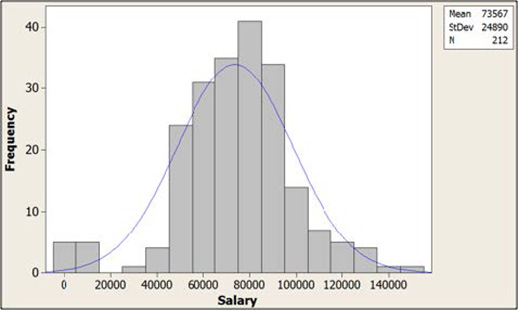
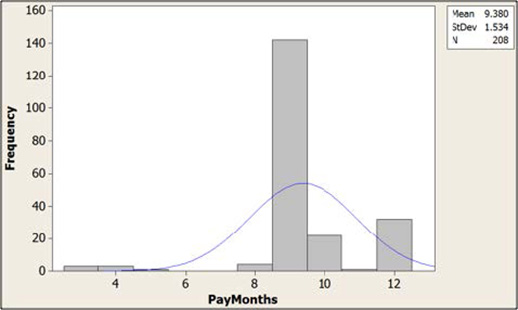
Figure 5. Faculty salary and contract length
CONCLUSION AND DISCUSSION
The literature tended to focus on the areas of financial challenges, salaries, technological advancement, professional experience, course load and class size, globalization, and lack of advancement opportunities as some of the growing concerns in higher education. When examining and attempting to draw conclusions, additional longitudinal data will be needed to establish trends. The data collected from this initial study yields a current snapshot into the current standings. The researchers felt the response rate was appropriate and representative of the population. United States faculty representation by state was well represented with 39 out of 50 states responding (78%), which included 212 respondents.
From the standpoint of salaries, additional data will have to be examined to see trends, but the mean salaries reported were above the national higher education mean. The mean of $73,567 for faculty salary fits well within the normal distribution but the standard deviation of $24,890 is very wide—possibly due to positional status, rank, length of time at current rank, institution, location within the United States, and market pay. Faculty contracts are primarily 9 months; 12 months for a chair or administrator.
Technological changes have transformed education greatly. Online delivery of courses and materials was one of the areas most affected or actually created by technological advancement. Although online education is growing in the United States as shared by other scholarly articles, the evidence of 74% of faculty teaching in the classroom followed by 13% hybrid, and 13% online, seems to be a relatively small percentage, and further study is needed to see if it is increasing within applied engineering.
The vast majority of the respondents had some work experience outside of academia with a mean of 12.34 years. This could support the notion that applied engineering programs tend to hire individuals with professional experience. More information is needed to determine if this is a requirement and benefit within the field or it is typical that individuals pursue higher education positions after working in industry.
Course load and class size should be further examined, and additional information such as type of institution and its mission to draw usable conclusions. This information will also have to be examined longitudinally to determine changes and trends by institution type. The distribution of faculty credit hours per semester is not normally distributed. The mean of 12.27 credit hours is both the mean and the highest point in the curve. The right skew of the distribution for students taught per semester underscores the tide towards a larger number of students for each faculty member per semester.
The lack of advancement opportunities of faculty is a concern for many as a large percentage of positions are contract only with no opportunities for advancement. Positional status for faculty is interesting with 21% as contract only, 19% as tenure track, and tenured faculty at 60%. Per faculty responses in question 23, more colleges and universities are hiring more contract–only faculty. Also, it appears that faculty members have spent a lot of time in their current rank with a mean of 10 years. Promotion and tenure is a typical process of advancement and generated the most disparate and heated anecdotal responses by faculty. Some individuals were content with the P&T policy in force at their institution, whereas others were very upset on how promotions and tenure was discriminately given to "special" faculty.
Additional information was collected in other areas that may hint at satisfaction or provide more insight into changes within the field. Academic freedom, benefits cost of coverage, talent usage, teaching manageability, resources and support, and research (scholarship) expectations all scored from mid–level to approximately 80% of acceptability by faculty. Overall, it appears faculty were not overwhelmed by the working environment of their educational institutions; they were not too upset about it either.
FUTURE RESEARCH
The authors intend to conduct a statistical study on positional status; academic rank; length of time at current rank; length of time in a nonacademic position; and academic salary and market pay by state, region, and subregion. Through a descriptive and inductive analysis of raw data from this current study, it is hoped that an indepth picture of exceptional career attributes can be extracted to help develop a "Faculty Body of Knowledge" in a future study. This study, as well as any planned future studies, is significant to college–level faculty and administrators in several ways. For administrators, being aware of current trends in higher education can be a powerful tool to manage and motivate faculty. From the faculty's point of view, this data can serve not only as negotiation leverage for compensation, load, and release issues, but it can also give faculty a sense of community by letting them know that their problems and concerns are not isolated and that they are potentially in the same situation as thousands of other faculty around the United States.
Trend data has to be established to determine change in the areas being investigated, and there are many areas in that warrant further investigation and refinement. These areas include: 1.) Additional analysis of administration faculty in terms of stipends and institutional expectations, 2.) Academic freedom in comparison to academic rank and other potential significant factors, 3.) Correlation between an institution's use of academic talents to manageability of teaching assignments, and 4.) Further analysis of teaching mode of delivery (face–to–face, hybrid, online), faculty resources availability, expectations for research (scholarship), unique ways to compensate faculty, and institutional expectations for promotion and tenure.
Dr. Jeffrey M. Ulmer is an Associate Professor in the School of Technology at the University of Central Missouri, Warrensburg.
Dr. Douglas Koch is an Associate Professor and Chair of the School of Technology at the University of Central Missouri, Warrensburg. He is a member of the Beta Chi Chapter of Epsilon Pi Tau.
Dr. Troy Ollison is an Associate Professor in the School of Technology at the University of Central Missouri, Warrensburg.
REFERENCES
American Association of University Professors (AAUP). (1993). The work of faculty: Expectations, priorities, and rewards. The American Society of University Professors. Retrieved from http://www.aaup.org/report/work-faculty-expectations-priorities-and-rewards . In The work of faculty: Expectations, priorities, and rewards . Retrieved from http://www.aaup.org/report/work-facultyexpectations-priorities-and-rewards
Ayokanmbi, F. M. (2011). Competencies for global engineers and technologists. Journal of Industrial Technology, 27 (1), 2-6
Barwick, D. W. (2007). Does class size matter? Inside Higher Ed . Retrieved from http://www.insidehighered.com/views/2007/12/06/barwick
Bureau of Labor Statistics. (2012, April 10). Postsecondary teachers . Retrieved from http://www.bls.gov/ooh/education-training-and-library/postsecondary-teachers.htm
Callahan, R. N., Jones, M., & Smith, R. R. (2008). Developing maximum career potential in manufacturing technology curricula. Journal of Industrial Technology, 24 (4), 2-7.
Chikasanda, K.C., Otrel-Cass, K., & Jones, A. (2010). Teachers’ views about technical education: implications for reforms towards a broad based technology curriculum in Malawi. International Journal of Technology, Design and Education, 21 , 363-379.
Chronicle of Higher Education. (2012). Midcareer mentoring, part 1. The Chronicle of Higher Education . Retrieved from http://chronicle.com/article/Midcareer-Mentoring-Part-1/131161/
Devine, K. L. (2006). Improving the knowledge transfer skills of industrial technology students. Journal of Industrial Technology, 22 (2).
Doggett, A. M., & Lightner, S. (2010). Online graduate degree recruiting: Is it different? Journal of Industrial Technology, 26 (4), 2.
Donlevy, J. (2005). The future of work: technology beckons. International Journal of Instructional Media, 32 (3). 202-204
Donoghue, F. (2011). The implications of teaching-load increases. The Chronicle of Higher Education . Retrieved from http://chronicle.com/blogs/innovations/the-implications-of-teaching-load-increases/30636 . In The implications of teaching-load increases . Retrieved from http://chronicle.com/blogs/innovations/the-implications-of-teaching-load-increases/30636
Field, K. (2011). Faculty at for-profits allege constant pressure to keep students enrolled. T he Chronicle of Higher Education . Retrieved from http://chronicle.com/article/Pawns-in-the-For-Profit/127424/
Garrison, C. P. (2005). Who moves from industry to academia and why: An exploratory survey and analysis. Education, 125 (3), 414-421
Grumwald, P. (2010). Educators, technology and 21st century skills: Dispelling five myths. Grumwald Associates LLC. Retrieved from http://www.grunwald.com/pdfs/Educators_Technology_21stCentury-Skills_GRUNWALD-WALDEN_Report.pdf . In Educators, technology and 21st century skills: Dispelling five myths .
Gumbo, M., Makgato, M., & Muller, H. (2012). The impact of in-service technology training programmes on technology teachers. The Journal of Technology Studies, 38 (1),23-33 .
Hogan, R. L. (2009). Assessment of technology graduate students’ learning preference styles utilizing the Myers-Briggs type indicator. Journal of Industrial Technology, 25 (1),2-6.
Jones, M. P., Smith, R. R., & Callahan, R. N. (2010). Perspectives of how academia is keeping pace with the changing needs of manufacturing professionals. Journal of Industrial Technology, 26 (1), 2-10.
Jones, R. T. (2013). The new American workforce: Challenges and opportunities for higher education . Education Workforce Policy, LLP. Retrieved from http://www.educationworkforcepolicy.com/papers.html
June, A. (2012). Professors seek to reframe salary debate. The Chronicle of Higher Education . Retrieved from http://chronicle.com/article/faculty-salaries-barely-budge-2012/131432/
Karoly, L. A., & Panis, C. W. A. (2004). The 21st century at work: Forces shaping the future workforce and workplace in the United States . Retrieved from http://www.rand.org/content/dam/rand/pubs/monographs/2004/RAND_MG164.pdf
Kelderman, E. (2012). State support for colleges falls 7.6% in 2012 fiscal year. The Chronicle of Higher Education . Retrieved from http://chronicle.com/article/State-Support-For-Higher/130414/
Kelley, T. R. (2012, Spring). Voices from the past: messages for a STEM future. The Journal of Technology Studies , 38(1), 34-42 .
Kelly, R. (2008). Balancing the demands of teaching, scholarship and service . Faculty Focus. Retrieved from http://www.facultyfocus.com/articles/teaching-careers-balancing-the-demands-of-teaching-scholarship-and-service
Kenney, L., McGee, P., & Bhatnagar, K. (2012). Different, not deficient: The challenges women face in STEM fields. The Journal of Technology, Management, and Applied Engineering, 28 (2), 2-9.
McClellan, G. S. (2012, July 18). Maintaining your passion for the job . Retrieved from http://chronicle.com/article/Maintaining-Your-Passion-for/132905/
Miller, M. (2011). Manufacturing education: Evolving to challenge adversity and public sentiment. The
Journal of Industrial Technology, 27 (2), 2-8.Nickolich, D., Feldhaus, C., Cotton, S., Barrett, A., & Smallwood, J. (2010). Perceived life satisfaction
of workplace specialist 1 faculty and mentors participating in a first-year STEM teacher training project. The Journal of Technology Studies, 36 (2), 41-54 .Occupational Outlook Handbook. (2012). Career and technical education teachers . Retrieved from http://www.bls.gov/ooh/education-training-and-library/career-and-technical-education-teachers.htm
Osborn, E. (2012). New realities. The Chronicle of Higher Education . Retrieved from http://chronicle.com/blogs/onhiring/new-realities/32979
Privateer, P. M. (1999, Jan/Feb). Academic technology and the future of higher education. The Journal of Higher Education, 70 (1), 1.
Sevier, R. A. (1996). Those important things: What every college president needs to know about marketing and student recruitment. College and University, 71 (4), 9-16.
Steinke, L. J., & Putnam, A.R. (2011, Spring). Mentoring teachers in technology education: analyzing the need. The Journal of Technology Studies, 37 (1), 41-49 .
University of Wisconsin - Stout. (2010). Definition of teaching, scholarly activity and service . Retrieved from http://www.uwstout.edu/parq/upload/85-40.pdf
Wheeler, S. (2004). Five smooth stones: Fighting for the survival of higher education. Distance Learning, 1 (3), 11-17.
Wilson, R. (2011). Back in the classroom: Colleges are calling off the deals that allowed many professors time out from teaching. The Chronicle of Higher Education . Retrieved from http://chronicle.com/article/Colleges-Are-Calling/129429/
Wolcott, L. L. (1997). Tenure, promoting and distance education: Examining the culture of faculty rewards. The American Journal of Distance Education, 11 (2), 3-18.